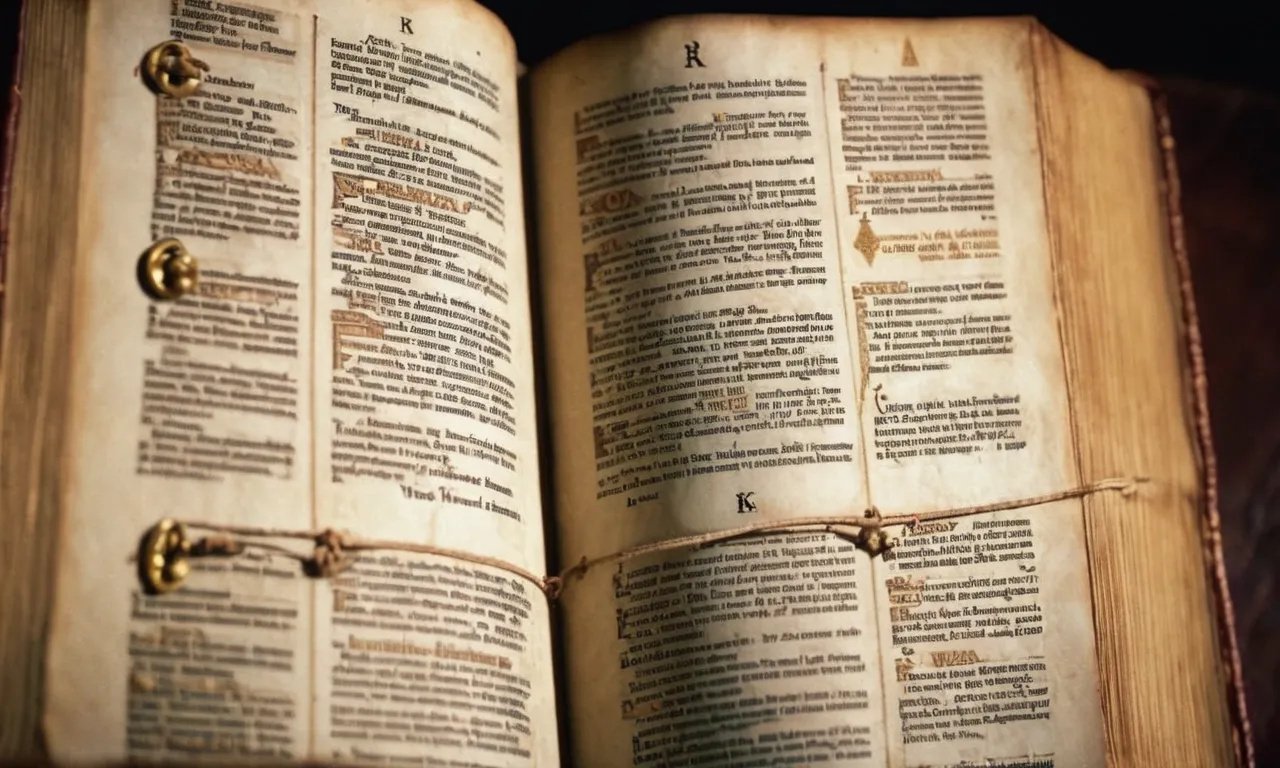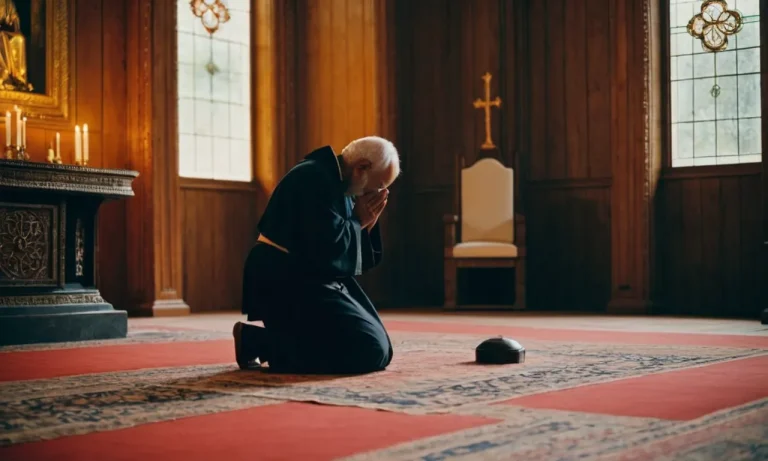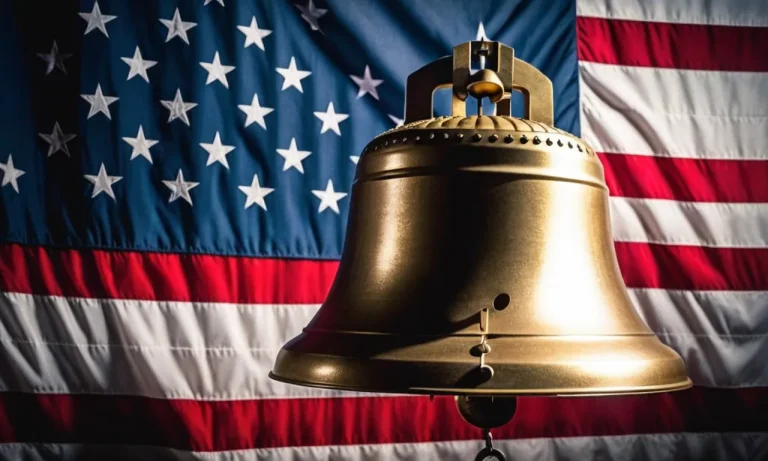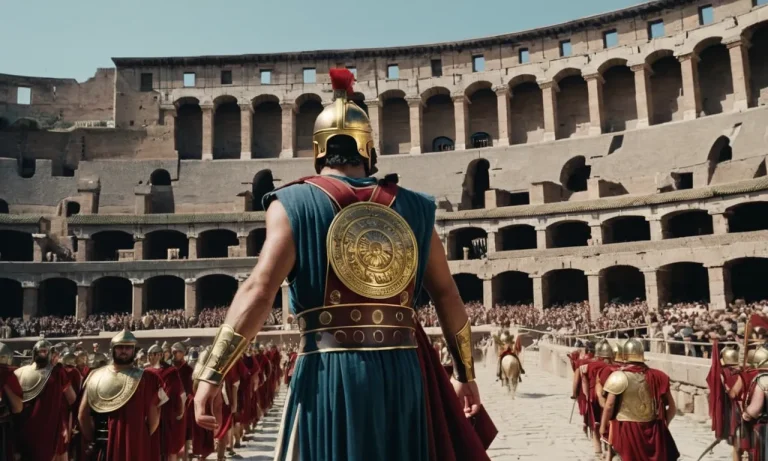Who Are The Elites In The Bible?
The Bible contains many examples of powerful and influential people who shaped biblical history. But who exactly were the elites that the Bible refers to? This comprehensive guide will examine the different groups and individuals that held elite status in biblical texts.
If you’re short on time, here’s a quick answer: The main elite groups and individuals in the Bible were kings, priests, prophets, and certain wealthy/noble families. Key examples include King David, the priestly families like the Levites, the major and minor prophets, and wealthy landowners like Abraham and Job.
In this nearly 3000 word guide, we will explore the background on each of these elite groups and look at specific biblical figures who were considered among the elite during their time. With over 5 main sections and dozens of supporting details, you’ll get a thorough understanding of the power structures that existed in biblical eras and how that shaped key events in Scripture.
Kings and Other Political Leaders
King David and King Solomon
King David and King Solomon were two of the most famous and influential kings in the Bible. David was the second king of Israel and united the 12 tribes of Israel into one kingdom. He conquered Jerusalem and made it his capital city.
David committed adultery with Bathsheba and arranged the death of her husband Uriah, but later repented. God denied David the privilege of building the temple, but promised that his son Solomon would build it.
Solomon succeeded David as king and is known for his great wisdom and wealth. He built the first temple in Jerusalem as God had promised. Solomon wrote many proverbs and songs, and people came from all over to hear his wisdom.
However, Solomon married many foreign women who turned his heart away from God in his later years. After Solomon died, the kingdom was divided into two kingdoms: Israel in the north and Judah in the south.
Other Israelite and Judahite Kings
Other kings of Israel include Jeroboam, Ahab, Jehu, and Hoshea. Jeroboam was the first king of the northern kingdom of Israel and led the people into idolatry. Ahab was an evil king who married the Phoenician princess Jezebel and worshipped her gods. The prophet Elijah confronted Ahab and Jezebel.
Jehu overthrew Ahab’s dynasty and destroyed the temple of Baal, but continued to worship the golden calves. Hoshea was the last king of Israel before the Assyrians conquered it.
In the southern kingdom of Judah, some good kings included Asa, Jehoshaphat, Hezekiah, and Josiah. Asa rid the land of idolatry, Jehoshaphat followed God but made an alliance with the wicked king Ahab. Hezekiah trusted in the Lord and rebelled against Assyria.
Josiah purified Judah of idolatry and repaired the temple. However, most of Judah’s kings did evil in the sight of the Lord.
Foreign Rulers and Political Figures
Some foreign kings and leaders mentioned in the Bible include Pharaoh of Egypt, Nebuchadnezzar of Babylon, Cyrus of Persia, and Caesar Augustus of Rome. Pharaoh enslaved the Israelites before the Exodus but later released them after the 10 plagues.
Nebuchadnezzar conquered Judah and destroyed Jerusalem and Solomon’s temple. He took Daniel and others into Babylonian captivity. Cyrus allowed the Jews to return to Jerusalem and rebuild the temple. Caesar Augustus called for the census that caused Joseph and Mary to travel to Bethlehem where Jesus was born.
Other political figures include Pontius Pilate, the Roman governor who ordered Jesus to be crucified. And Herod the Great, who ruled Judea under the Romans and tried to kill the baby Jesus. Esther was made queen of Persia and saved the Jews from Haman’s plot.
Daniel served in the courts of Babylonian and Persian kings as an advisor though he was originally taken as a captive.
Priests and Levites
Aaron and the First Priests
According to the Bible, Aaron was the brother of Moses and the first high priest of the Israelites. He helped Moses lead the Israelites out of Egypt and into the wilderness. God chose Aaron and his sons to be set apart as priests and establish the priestly line (Exodus 28:1).
Aaron played a vital role as mediator between God and the people.
The Priestly Line and Levites
The priestly line continued through Aaron’s descendants. The priests held a privileged status in Israelite society. They performed important religious rituals and ceremonies. The Levites were members of the tribe of Levi who assisted the priests in the temple and handled more mundane tasks.
Though not as prestigious as priests, Levites still held special roles. They helped transport the tabernacle and served as teachers, judges, musicians, gatekeepers, and other duties in the temple (1 Chronicles 23:3-5).
Levites lived among the other tribes and relied on the tithes and offerings brought by Israelites.
Priestly Duties and Influence
Priests served as religious authorities and instructors of the law. They performed sacrifices, offerings, and important rituals like the Day of Atonement ceremony. Priests inspected people for skin diseases and other physical complaints.
They helped determine guilt and innocence and settle legal disputes (Leviticus 13, Deuteronomy 17:8-13).
The priests wielded remarkable power and commanded respect in ancient Israelite society. The high priest in particular held immense authority though the balance of power shifted at times. Still, the priests’ intermediary role afforded them unique status among Biblical elites.
Statistical website Statista shows priests formed an elite yet complex social class in ancient Israelite culture, fulfilling essential religious and leadership functions.
Prophets
Major Prophets
The Major Prophets refer to Isaiah, Jeremiah, Lamentations, Ezekiel, and Daniel in the Old Testament. These books are labelled “major” because of their longer length compared to the 12 Minor Prophets. The Major Prophets played vital social, ethical, and spiritual leadership roles in ancient Israelite society.
Isaiah warned the people of Israel about turning away from God and called them to live just and righteous lives. Jeremiah prophesied about Israel’s coming destruction by the Babylonians if they refused to turn from idolatry.
Ezekiel encouraged the despondent exiles in Babylon with messages of hope and restoration. Daniel spoke messages of God’s sovereignty over all earthly kingdoms during the Jewish exile.
Minor Prophets
The Minor Prophets refer to the 12 books from Hosea to Malachi. Though “minor” in length, their messages were just as vital for Israel. These include calls to social justice (Amos), warnings against compromise with surrounding pagan nations (Hosea), pronouncements of future judgment (Zephaniah), and prophecies about the coming Messiah (Zechariah).
Key Minor Prophets:
- Hosea – warned Israel against spiritual adultery with idols
- Joel – called the people to repentance at the coming “day of the Lord”
- Amos – condemned social injustice and elite oppression of the poor
The Social Role of Prophets
The prophets played unique social roles in ancient Israelite culture as key ethical and spiritual leaders.
They boldly spoke out against social injustice, abuse of power, economic exploitation of the poor by elites, and spiritual compromise with pagan religions. Many prophets were seen as eccentric figures, but they filled the vital role of being the social and moral conscience of Israel.
Key social justice focused prophets were Amos, Micah, Isaiah, and Jeremiah. Though often disliked by kings and elites, the prophets gave voice to poor and marginalized groups without power in Israelite society.
Wealthy Families and Landowners
Abraham and Old Testament Patriarchs
Abraham is considered the father of the Jewish people and an important patriarch in the Bible. He came from a wealthy family and owned large herds of livestock and many servants (Genesis 12:16). Abraham’s wealth and status enabled him to interact with kings and powerful rulers, like Pharaoh of Egypt and Abimelech king of Gerar.
Other patriarchs like Isaac and Jacob were also prosperous and influential. They had substantial means to acquire land, resources, and labor.
New Testament Figures
The New Testament contains several wealthy and elite individuals. Zacchaeus was a chief tax collector who had become very rich (Luke 19:2). Joseph of Arimathea was a wealthy and prominent member of the Sanhedrin council who provided the tomb for Jesus’ burial (Matthew 27:57-60).
Nicodemus was a Pharisee and Jewish leader who had status and resources (John 3:1). Lydia was a successful businesswoman who dealt in expensive purple cloth (Acts 16:14). The Bible portrays their wealth and status in both positive and negative ways.
Tax Collectors and Other Elites
Tax collectors were considered elites in Jewish society, though they were also despised as collaborators with the Roman occupation. The chief tax collectors acquired wealth by overcharging citizens and keeping the surplus.
Matthew was a tax collector who left his lucrative position to follow Jesus (Matthew 9:9). The Gospels also mention other Jewish elites, like scribes, Pharisees, priests, and synagogue leaders. Though some opposed Jesus, others like Nicodemus were drawn to him.
Overall, the Bible contains many examples of wealthy, influential, and elite individuals interacting with biblical figures.
Religious Institutions
The Sanhedrin and Temple Priesthood
The Sanhedrin was the highest legal, legislative and judicial body among the Jews during the time of Jesus. It was made up of 71 members, including high priests, elders and teachers of the law (scribes).
The high priest presided over the Sanhedrin and the temple priesthood performed rituals and sacrifices. The Sanhedrin and temple priests wielded considerable religious and political power, often coming into conflict with Jesus over issues of authority and interpretation of the law.
The Pharisees and Sadducees
The Pharisees were a religious sect that strictly observed and interpreted Mosaic and oral law. They believed in concepts like the resurrection of the dead. The Sadducees were the temple elites who denied ideas like the resurrection.
According to a 2021 biblical archeology report, the Sadducees disappeared around 70 AD after the destruction of the Second Temple, while the Pharisees continued and shaped later Rabbinic Judaism.
Early Christian Churches
The early Christian church as described in Acts and the Epistles was led by apostles and elders. Over time, a more defined leadership structure emerged with bishops overseeing churches in different cities. The Bishop of Rome eventually claimed unique authority as the successor of Peter.
However, tensions arose between the “elite” hierarchy and ordinary believers over issues of doctrine and discipline, similar to the tensions Jesus faced with the religious elites of his day.
Conclusion
As we have seen, the Bible contains many stories about influential figures who made up a powerful elite class during ancient times. This guide examined several key groups including political leaders like kings, religious leaders like prophets and priests, and wealthy landowning families.
By better understanding these elite circles and how they connect to major biblical events, we gain crucial insight into the socio-political backdrop of Scripture. Whether they were royalty like King David, priests like Aaron, prophets like Isaiah, or wealthy patriarchs like Abraham, these elites formed an important part of the biblical landscape.








